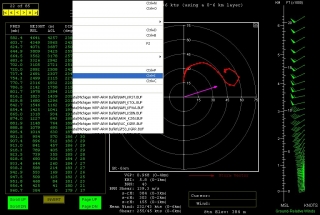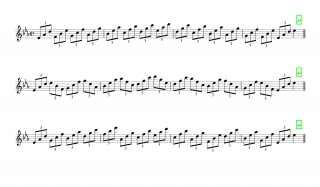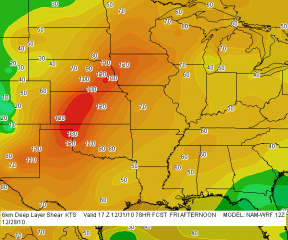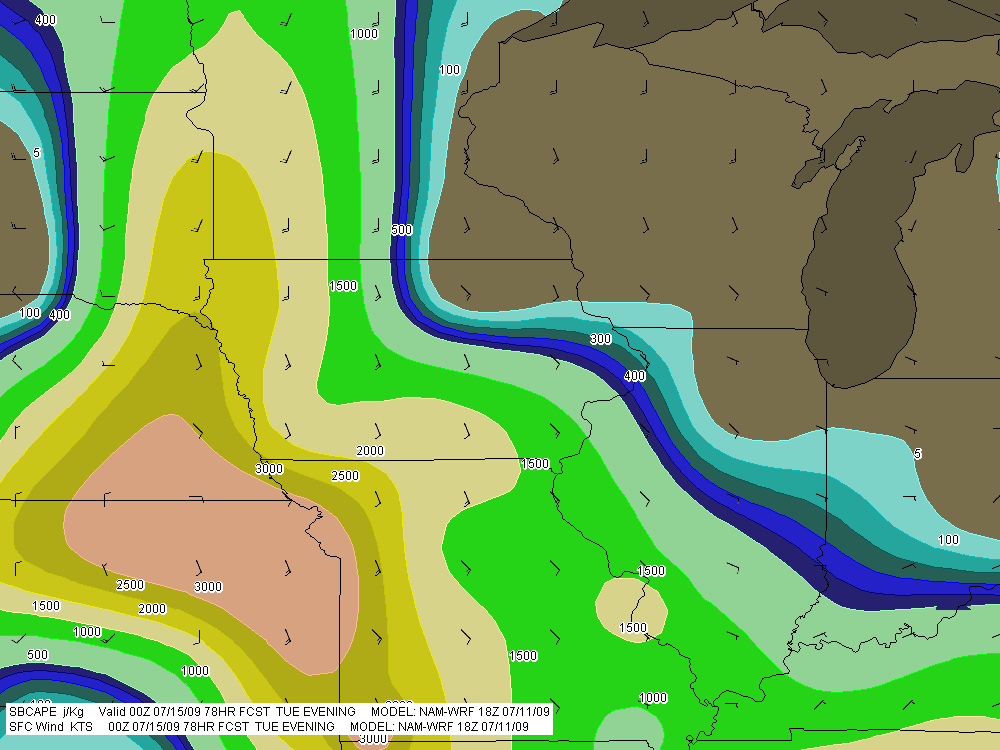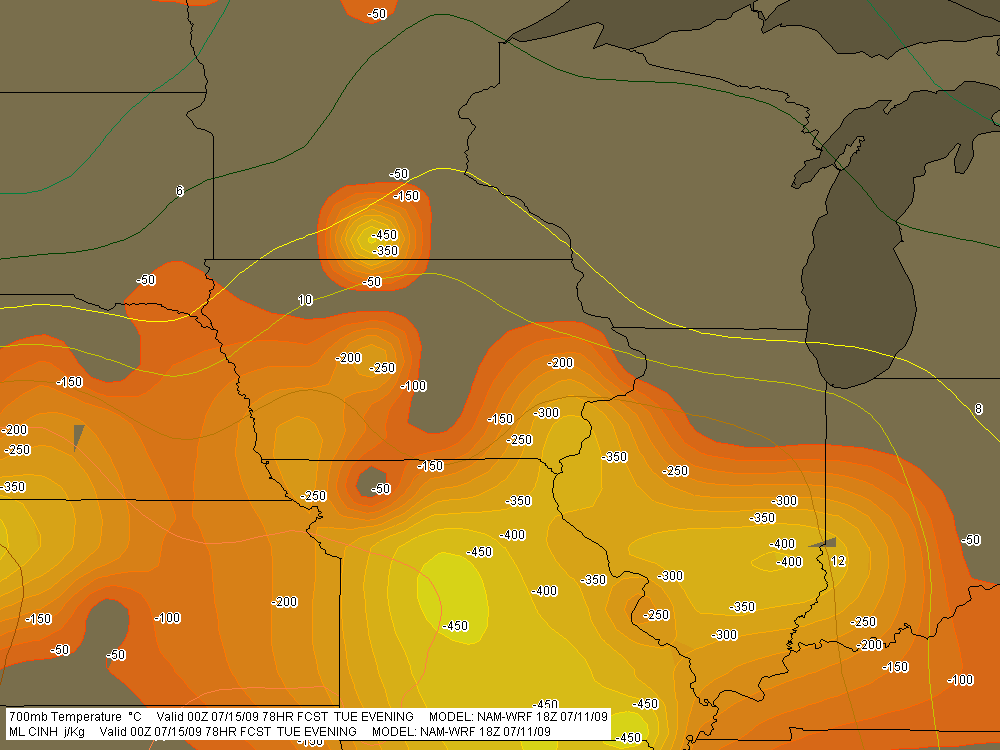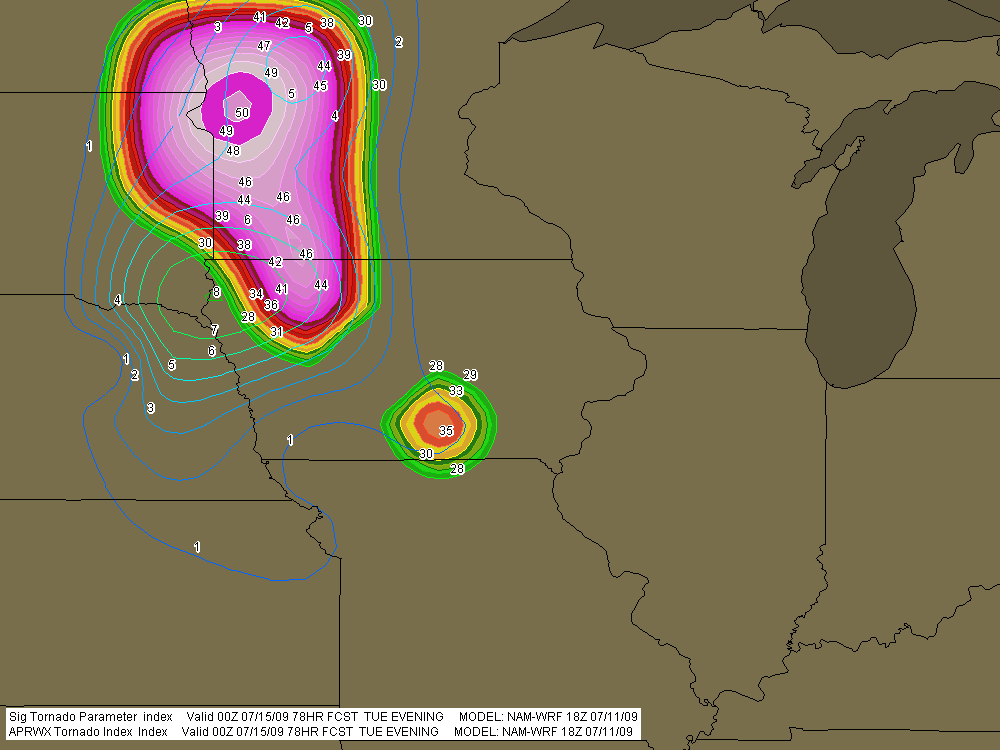Sumer is icumen in,
Loudly sing, cuckoo!
Grows the seed and blows the mead,
And springs the wood anew;
Sing, cuckoo!
Ewe bleats harshly after lamb,
Cows after calves make moo;
Bullock stamps and deer champs,
Now shrilly sing, cuckoo!
Cuckoo, cuckoo
Wild bird are you;
Be never still, cuckoo!
Right. It looks like we’re about to have our hands full, what with bleating ewes, cows making moo, and so on. There are, however, some things that the old folk song fails to mention. The polar jet lifting north, for instance. Weakening mid-level winds. Temperatures at 700 mb heating up, with the 12 degree centigrade threshold expanding across the southern and central plains and ushering in the era of capping. I don’t know why the ancient songwriter didn’t address these matters. They’re as much a part of sumer–that is to say, summer–as stamping bullocks.
Here in Caledonia, yesterday was hot and today promises to be even hotter, around 95 degrees, before a cold front blows through tonight and brings relief. After that, we look to be in for a bout of unsettled weather. I’ll take it, even though it may inconvenience at least one outdoor gig I’ll be playing this weekend.
The summer weather pattern is on the way, putting the damper on storm chasing in the southern and central plains. Considering how devastatingly active this spring has been, that’s probably a good thing. I doubt that the people in towns such as Joplin, Missouri, will lament this season’s passing. As for those who chased storms in Dixie Alley and the southern plains–and there were more chasers than ever this year–you certainly got your fill of action, and some of you saw far more than you cared to. There are some amazing stories that have come out of the storm chasing community, and my hat is off to those of you who stepped in to help in tornado-stricken areas.
This was the worst of all seasons to be sidelined due to financial constraints, but that’s how it has been with me and with others who have taken a hit in the pocketbook from this rotten economy. I’m frankly happy to see the crest of storm season 2011 passing; I much prefer to occupy my mind with more productive thoughts than fretting over what I’m missing.
In any event, the playground is shifting northward. It’s not there quite yet, but it’s on the way. Troughs that had been digging deep into the southern plains are now beginning to ripple across the northern tier and Canada, and lately, mesoscale convective systems have been cropping up regularly in the SPC discussions. Those are the specialty of the state where I live.
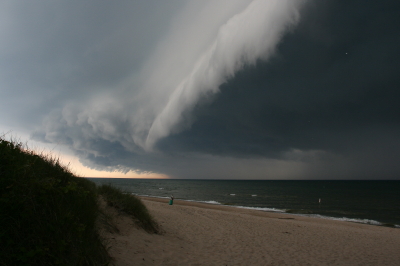 If there’s any advantage to living in the Great Lakes, it’s that we’re close enough to the summer jet stream that it can still dip down out of Canada into our neck of the woods. And while northwest flow isn’t exactly your classic chase scenario, it can deliver some occasional surprises. Illinois in particular has gotten some whopping summer tornadoes–and for those of you who don’t chase east of the Mississippi, I don’t mind telling you that central and northern Illinois is fabulous chase territory. Also, closer to home, even garden variety arcus clouds are sublime to watch sweeping in at the Lake Michigan shoreline.
If there’s any advantage to living in the Great Lakes, it’s that we’re close enough to the summer jet stream that it can still dip down out of Canada into our neck of the woods. And while northwest flow isn’t exactly your classic chase scenario, it can deliver some occasional surprises. Illinois in particular has gotten some whopping summer tornadoes–and for those of you who don’t chase east of the Mississippi, I don’t mind telling you that central and northern Illinois is fabulous chase territory. Also, closer to home, even garden variety arcus clouds are sublime to watch sweeping in at the Lake Michigan shoreline.
For better or worse, sumer is icumen in and storm season is winding down. Most people aren’t sorry for the change. But most people don’t view storms the way that storm chasers do. I guess we’re a bit cuckoo.
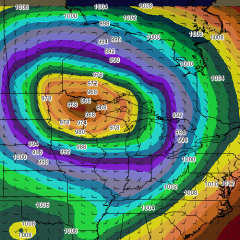
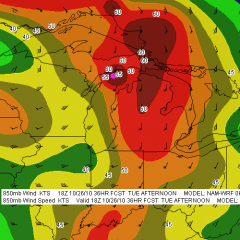
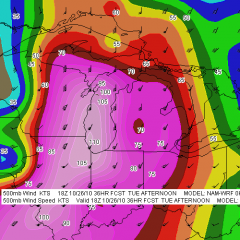
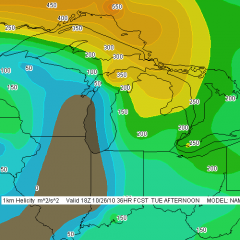
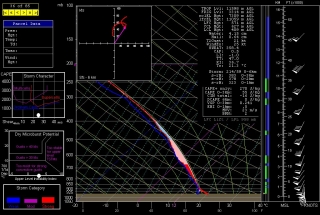

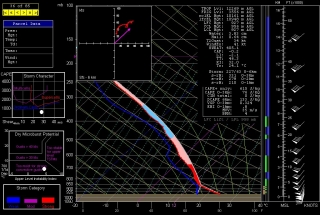
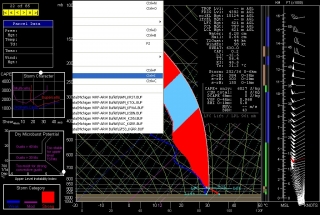

 Look at this skew-T and hodograph and tell me they’re not to die for. They’re the 00Z NAM for tomorrow, 21Z, at Rochester, Minnesota. Click on the images to enlarge them. (Apologies for the weird pulldown menu obscuring parts of the images. I don’t know why that happened.)
Look at this skew-T and hodograph and tell me they’re not to die for. They’re the 00Z NAM for tomorrow, 21Z, at Rochester, Minnesota. Click on the images to enlarge them. (Apologies for the weird pulldown menu obscuring parts of the images. I don’t know why that happened.)
